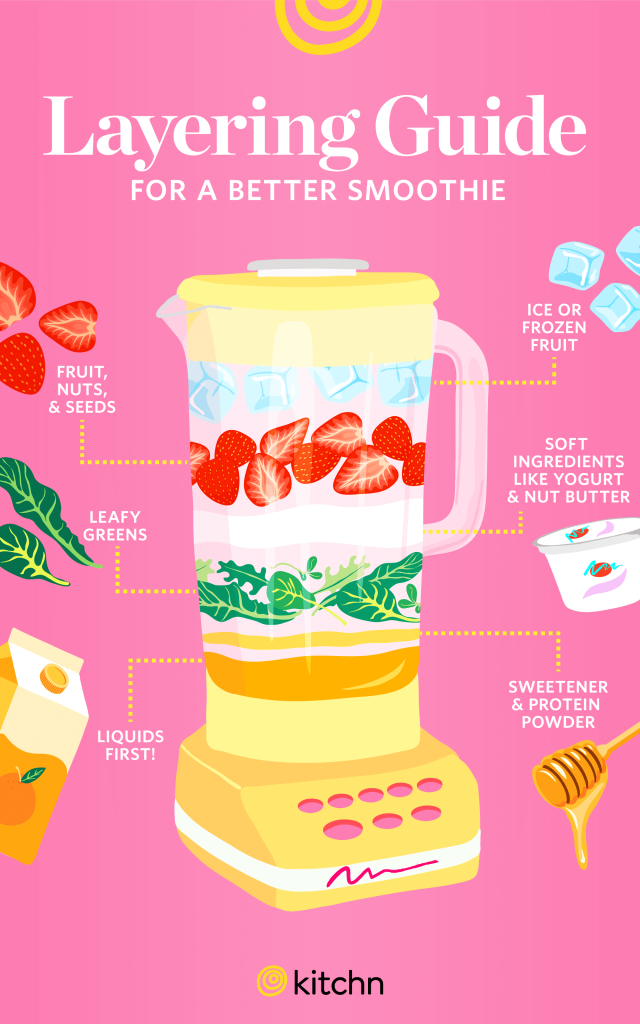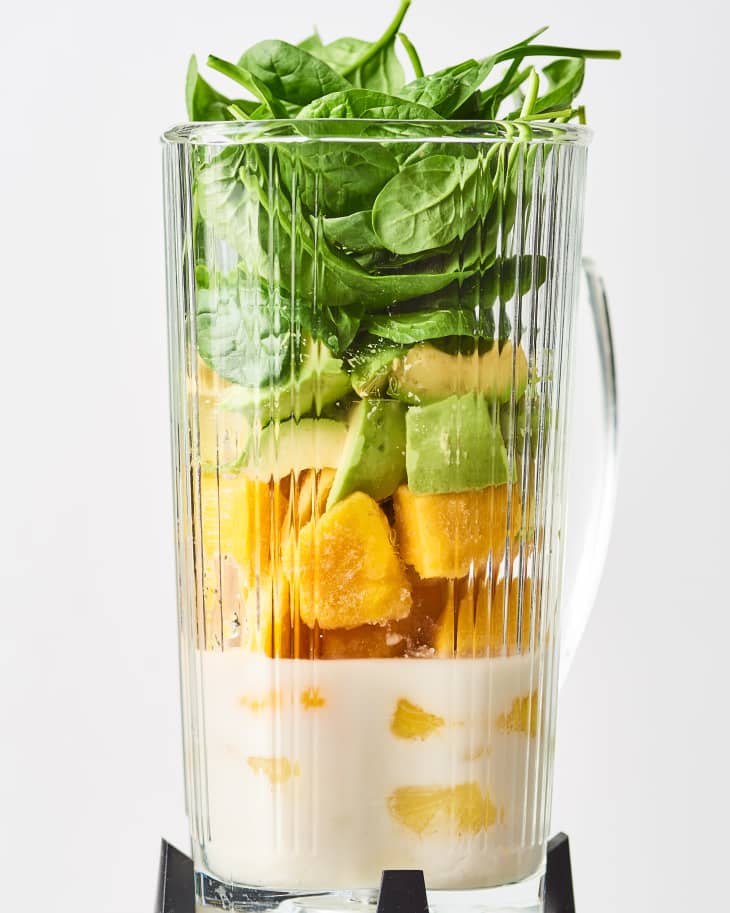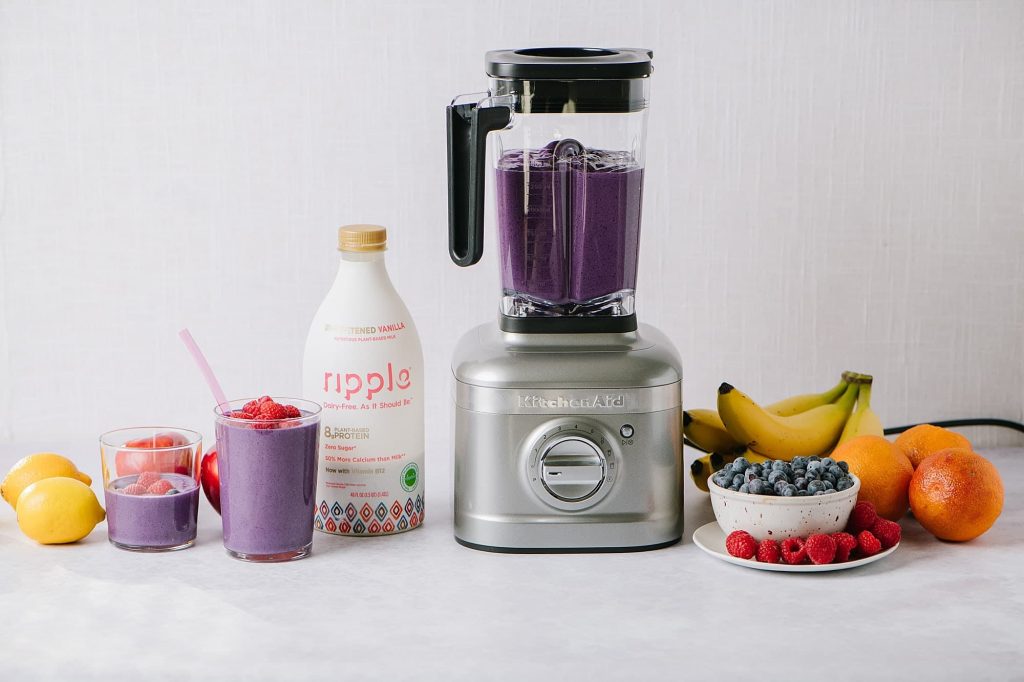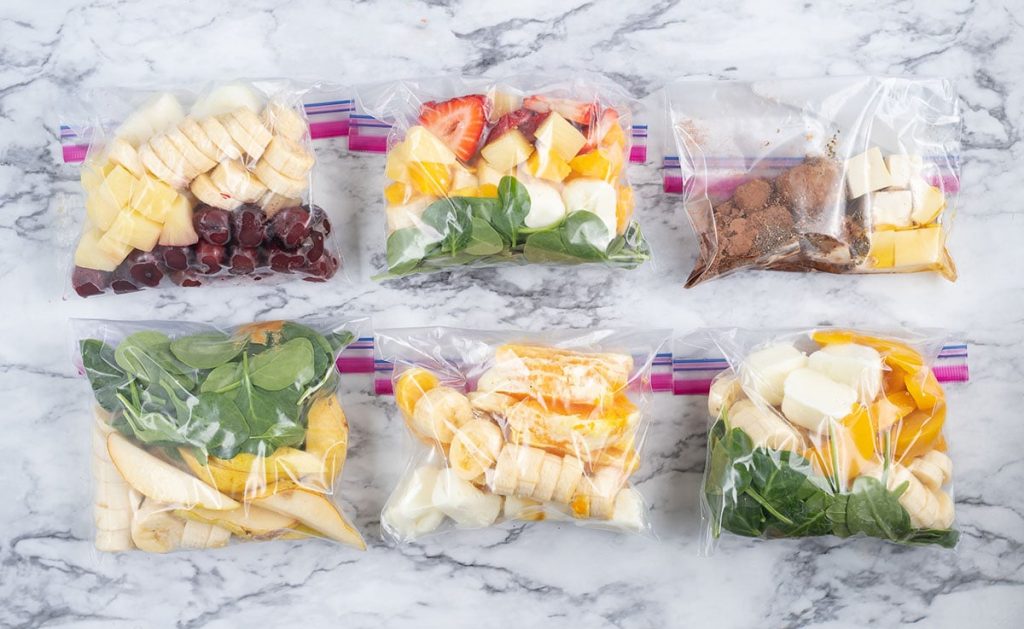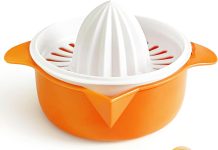Let’s talk about the amount of preparation required for blender ingredients. Have you ever wondered if you need to spend hours chopping, peeling, and prepping your ingredients before tossing them into the blender? Well, we’re here to shed some light on this topic. Whether you’re a busy professional or a home cook looking to save time in the kitchen, understanding the prep work needed for blender ingredients can make a world of difference in your culinary adventures.
Review contents
Selecting Ingredients
Fresh Ingredients
When it comes to creating delicious meals in the kitchen, one of the most important steps is selecting fresh ingredients. Fresh ingredients not only provide maximum flavor but also offer vital nutrients that are essential for a healthy diet. So, whenever we embark on a cooking adventure, we make it a point to choose the freshest ingredients available. Whether it’s crisp vegetables, juicy fruits, or succulent meats, we ensure that our ingredients are of the highest quality.
Proper Ripeness
In addition to freshness, selecting ingredients at the proper ripeness is crucial for achieving the best flavors and textures in our dishes. For fruits, we look for a vibrant color and a slightly firm yet yielding texture. This ensures that the fruits are neither underripe nor overripe. When it comes to vegetables, we opt for vibrant colors, crispness, and leaves that are free from wilting. By carefully choosing ingredients at their peak ripeness, we can enhance the overall taste and quality of our dishes.
Quality and Taste
While freshness and ripeness are key factors, we also pay close attention to the overall quality and taste of the ingredients we select. For example, when it comes to meats, we opt for cuts that are well-marbled, indicating tenderness and flavor. When choosing dairy products, we look for brands known for their superior quality and exceptional taste. By considering both quality and taste, we ensure that our dishes are made with the best ingredients available, resulting in a delightful culinary experience.
Cleaning and Washing
Removing Dirt and Debris
Before diving into the preparation process, it’s important to thoroughly clean our ingredients. This involves removing any dirt, sand, or debris that may be lingering on the surface. For fruits and vegetables, we gently scrub them under cold running water or use a vegetable brush to ensure all contaminants are removed. This step is vital for both food safety and maintaining the natural flavors of our ingredients.
Rinsing Thoroughly
Once we have removed the visible dirt and debris, we ensure that our ingredients are properly rinsed. This step helps to remove any remaining residue and unwanted particles. We continue to rinse under cold running water until the water runs clear, giving us confidence that our ingredients are clean and ready for consumption.
Removing Pesticide Residue
To further ensure the safety and quality of our ingredients, we also take steps to remove pesticide residue. We soak our fruits and vegetables in a mixture of water and vinegar for a few minutes. This natural solution helps to break down and remove any lingering pesticides. After the soaking process, we rinse our ingredients thoroughly with water, leaving us with clean, pesticide-free produce.
This image is property of cdn.apartmenttherapy.info.
Peeling and Trimming
Removing Skin and Rinds
Peeling or removing the skin and rinds of certain ingredients is often necessary to achieve the desired texture and taste in our dishes. For example, we peel the skin of potatoes, carrots, and apples before adding them to the blender. By doing so, we eliminate any potential bitterness or tough textures that may take away from the overall enjoyment of our dishes.
Trimming Excess Fat
Some meats, such as poultry or cuts of beef, may have excess fat that needs to be trimmed before blending. This not only helps to reduce the overall fat content in our dishes but also ensures a more pleasant texture. By carefully removing any visible fat, we can create healthier and more flavorful meals.
Cutting Away Bruised Parts
In order to create dishes that are visually appealing and free from undesirable flavors, we take the time to cut away any bruised or damaged parts of our ingredients. Whether it’s a bruised apple or a wilted piece of lettuce, removing these blemishes ensures that our dishes are made with the finest and freshest components.
Chopping and Dicing
Choosing the Right Size
When it comes to chopping and dicing ingredients for the blender, size matters. We consider the recipe’s requirements and aim to achieve the ideal size for each ingredient. For example, if a recipe calls for finely chopped onions, we make sure to dice them into small, uniform pieces. Conversely, if the recipe calls for larger chunks of vegetables, we adjust our chopping technique accordingly. By selecting the right size, we can ensure that every bite of our dish is harmoniously balanced.
Consistent Pieces
Consistency is key when it comes to achieving even cooking and blending throughout our dishes. Whether it’s chopping carrots, celery, or any other ingredient, we strive to achieve consistent pieces. This allows for uniform cooking and blending, ensuring that each bite is filled with the perfect combination of flavors and textures.
Uniformity for Even Blending
To achieve smooth and consistent textures in our blended dishes, we prioritize uniformity during the chopping and dicing process. This means that all ingredients should be cut into similar sizes and shapes. Uniformity allows the blender to evenly distribute the components, resulting in a well-blended and harmonious final product. By taking the extra time to ensure uniformity, we can elevate the quality of our blended creations.
This image is property of cdn.apartmenttherapy.info.
Measuring and Portioning
Accurate Measurements
When it comes to creating delicious dishes, precise measurements are essential. Whether we’re following a recipe or experimenting with new flavors, accurate measurements ensure that the right balance of ingredients is achieved. We use measuring cups, spoons, and kitchen scales to ensure we’re adding the correct amounts of each component. By adhering to accurate measurements, we can create dishes that are consistently flavorful and well-balanced.
Proper Proportions
In addition to accurate measurements, it’s important to maintain proper proportions when combining ingredients in the blender. This ensures that no single flavor overwhelms the others and that each ingredient’s unique characteristics are showcased in the final dish. By carefully considering the proportions of each component, we create dishes that are harmoniously balanced and enjoyable.
Balanced Flavors
Creating dishes with balanced flavors is a cornerstone of our culinary philosophy. We strive to achieve the perfect combination of sweet, savory, sour, and salty flavors. By measuring and portioning our ingredients thoughtfully, we can ensure that no flavor overpowers the others. This leads to a well-rounded, satisfying taste in every bite and guarantees a memorable dining experience.
Freezing and Storing
Properly Sealing in Airtight Containers
To preserve the freshness and quality of our ingredients, we take great care in properly sealing them in airtight containers. Whether it’s leftover chopped vegetables or partially used herbs, sealing them in airtight containers helps to prevent freezer burn and extends their shelf life. By using freezer-safe bags or containers, we can confidently store our ingredients without fear of deterioration.
Labeling and Dating
Organization is key when it comes to storing ingredients in the freezer. To avoid confusion and minimize waste, we label and date each container or bag before placing them in the freezer. This simple step allows us to quickly identify the contents and ensures that we use the oldest ingredients first. By maintaining proper labeling and dating practices, we make the most of our stored ingredients and reduce food waste.
Optimal Freezer Storage
When it comes to freezer storage, having a well-organized system is essential. We arrange our frozen ingredients in a manner that allows for easy access and retrieval. By keeping similar ingredients together and utilizing freezer-safe containers, we can maintain an orderly freezer and prevent ingredients from becoming lost or forgotten. This efficient storage system not only saves us time in the kitchen but also ensures that our ingredients remain in optimal condition until they are needed.
This image is property of bakedbree.com.
Soaking and Softening
Rehydrating Dried Ingredients
For certain recipes, rehydrating dried ingredients is necessary to achieve the desired consistency and enhance flavors. Whether it’s dried beans, fruits, or spices, soaking these ingredients can bring them back to life. We immerse them in water or other liquids until they become plump and soft, ready to be blended into our dishes. By taking the time to soak and rehydrate dried ingredients, we infuse our dishes with depth and complexity.
Softening Tough Textures
In some cases, certain ingredients may have tough textures that need to be softened before blending. Whether it’s tough cuts of meat or fibrous vegetables, we use techniques such as marination or gentle cooking methods to break down their tough fibers. By softening these ingredients, we ensure that they blend seamlessly into our dishes, creating a cohesive and enjoyable eating experience.
Enhancing Flavors
Soaking and softening ingredients not only changes their texture but also enhances their flavors. As ingredients absorb moisture or flavors from marinades, they become more flavorful and aromatic. This step allows us to elevate the taste profile of our dishes and create a harmonious blend of flavors. By deliberately soaking and softening our ingredients, we ensure that every bite is bursting with deliciousness.
Marinating and Seasoning
Infusing Flavors
Marinating ingredients is a powerful technique for infusing flavors into our dishes. By combining the ingredients with a carefully crafted marinade, we allow the flavors to meld and penetrate the surface, creating a depth of taste. Whether it’s marinating meats, tofu, or vegetables, we give the ingredients ample time to absorb the seasonings. This process results in dishes that are rich in flavor and complexity.
Tenderizing Ingredients
Marinating not only enhances flavors but can also tenderize tougher cuts of meat or vegetables. The acids or enzymes present in the marinade help to break down the proteins, resulting in more tender and succulent bites. By allowing the ingredients to marinate, we ensure that every bite is tender and enjoyable, making our dishes a culinary sensation.
Enhancing Taste
Seasoning is a fundamental aspect of cooking, and blending is no exception. We carefully add the necessary seasonings to elevate the taste of our ingredients. Whether it’s a pinch of salt, a sprinkle of herbs, or a dash of spices, each seasoning is thoughtfully selected to enhance the natural flavors of our dishes. By paying attention to the nuances of taste, we create dishes that are memorable and satisfying to the palate.
This image is property of livesimply.me.
Blanching and Blanch Shocking
Preserving Color and Nutrients
Blanching, a cooking technique that involves briefly immersing ingredients in boiling water and then rapidly cooling them in ice water, is a valuable step in maintaining the vibrant colors and nutrients of our ingredients. It helps to set the color, preserve the texture, and lock in the nutritional value. Blanching is particularly beneficial for green vegetables, ensuring that they retain their bright hues and remain crisp.
Removing Bitterness
Blanching is an effective method for removing bitterness from certain ingredients. For example, blanching leafy greens like kale or collard greens can help to reduce their bitterness, resulting in a milder and more palatable flavor. By subjecting these ingredients to a quick blanch, we can balance out their taste and make them more enjoyable in our dishes.
Maintaining Crispness
Blanch shocking, the process of cooling blanched ingredients in ice water, is a crucial step in maintaining their crisps. After blanching, the rapid cooling process halts the cooking and preserves the desired texture of the ingredients. This is particularly important for vegetables that we want to retain a pleasant crunch in our dishes. By blanch shocking, we ensure that our ingredients retain their crispness and add a delightful texture to our blended creations.
Precooking or Partial Cooking
Preventing Foodborne Illness
Precooking or partially cooking certain ingredients is an important safety measure, especially when it comes to items like meats or food that needs to be heated to a specific temperature. By partially cooking these ingredients before blending, we reduce the risk of foodborne illnesses that can result from consuming undercooked or raw ingredients. By prioritizing food safety, we can enjoy our meals without any concerns.
Reducing Cooking Time
Precooking or partial cooking also helps to reduce the overall cooking time of our dishes. By partially cooking ingredients before blending, we can expedite the process and bring our meals to the table more quickly. Whether it’s parboiling vegetables or partially searing meats, this technique allows us to prepare delicious and nutritious meals without spending excessive time in the kitchen.
Softening Ingredients
For certain recipes, precooking or partially cooking ingredients is necessary to soften their textures. This is particularly true for ingredients like beans, lentils, or root vegetables, which may require a longer cooking time to become tender. By precooking or partially cooking these ingredients, we ensure that they blend smoothly and effortlessly into our dishes, resulting in a delightful and cohesive eating experience.
In conclusion, the amount of prep work needed for blender ingredients may seem extensive, but each step plays a vital role in creating delicious and well-balanced dishes. From selecting the freshest ingredients to properly cleaning, peeling, and chopping them, every action contributes to the overall quality and taste of our culinary creations. By following these steps and techniques, we can ensure that our blended dishes are not only visually enticing but also bursting with flavors. So, the next time you embark on a culinary adventure, don’t skip out on the prep work – embrace it and enjoy the transformative process that turns simple ingredients into sensational meals. Happy blending!
This image is property of www.superhealthykids.com.


